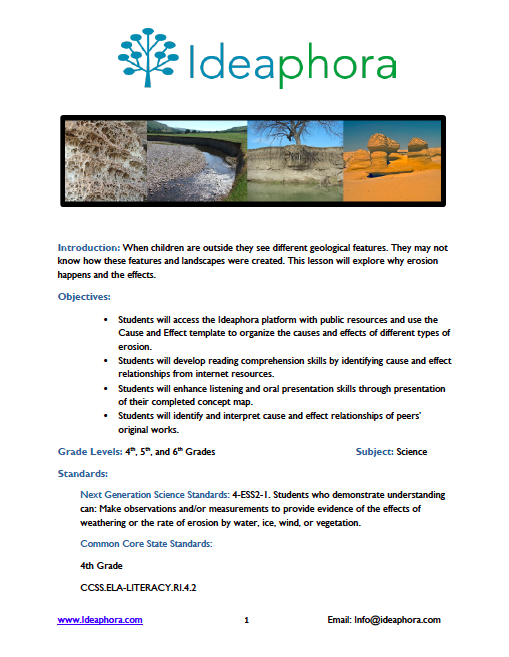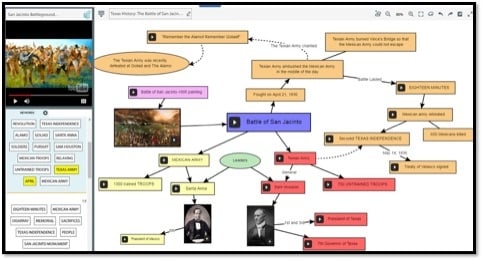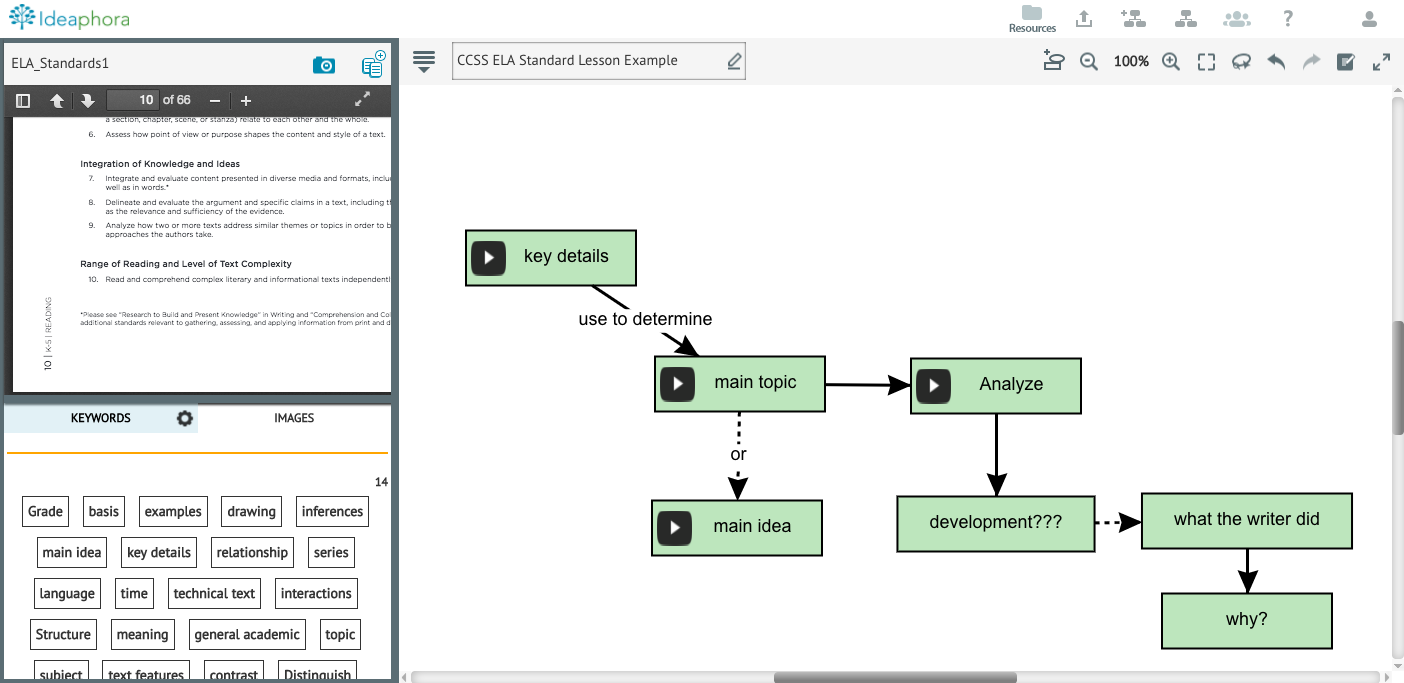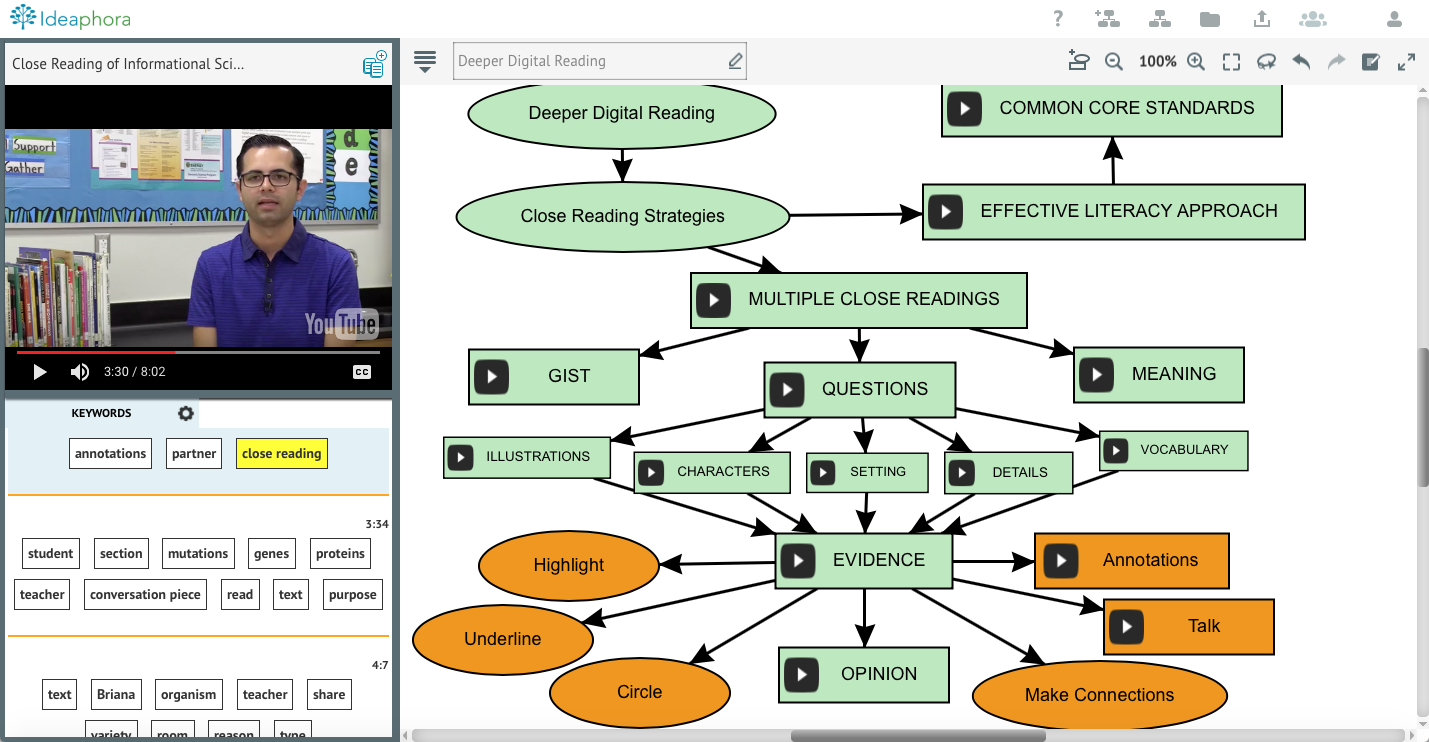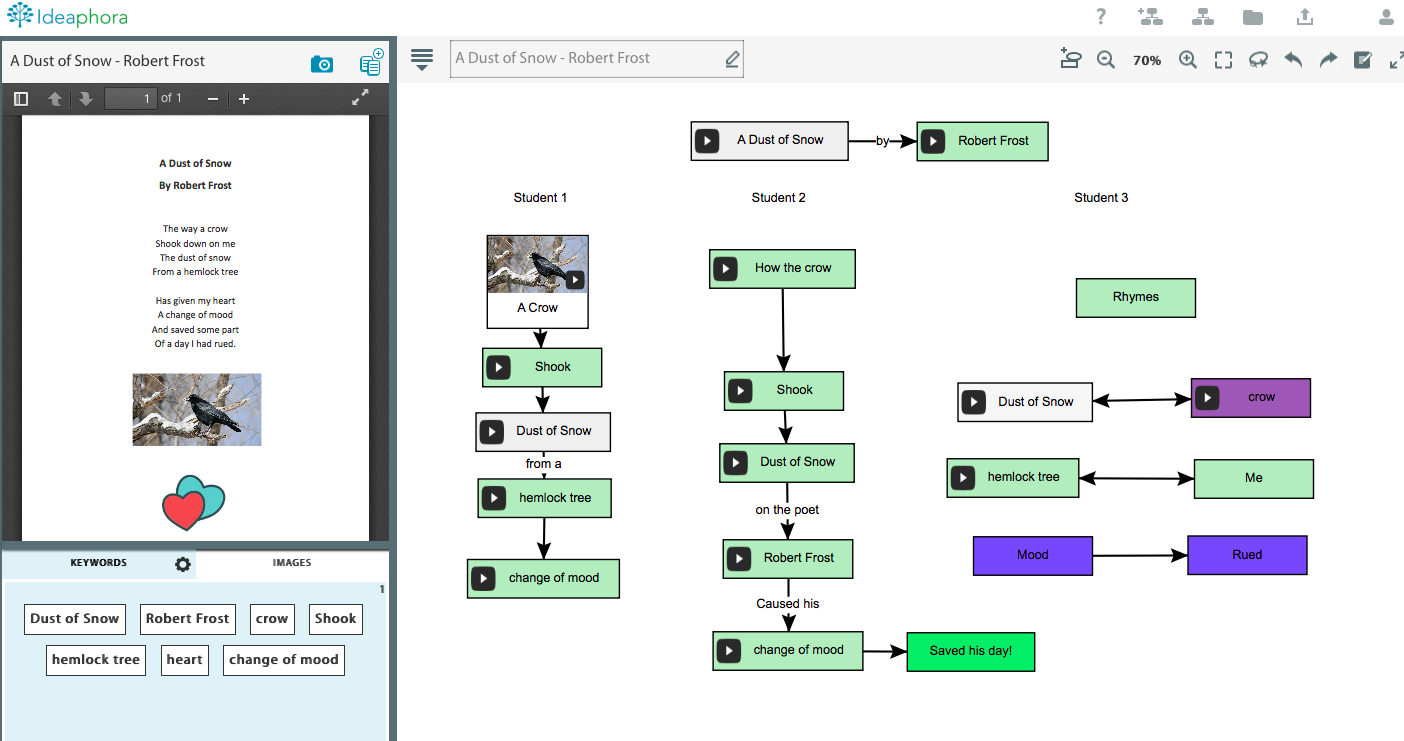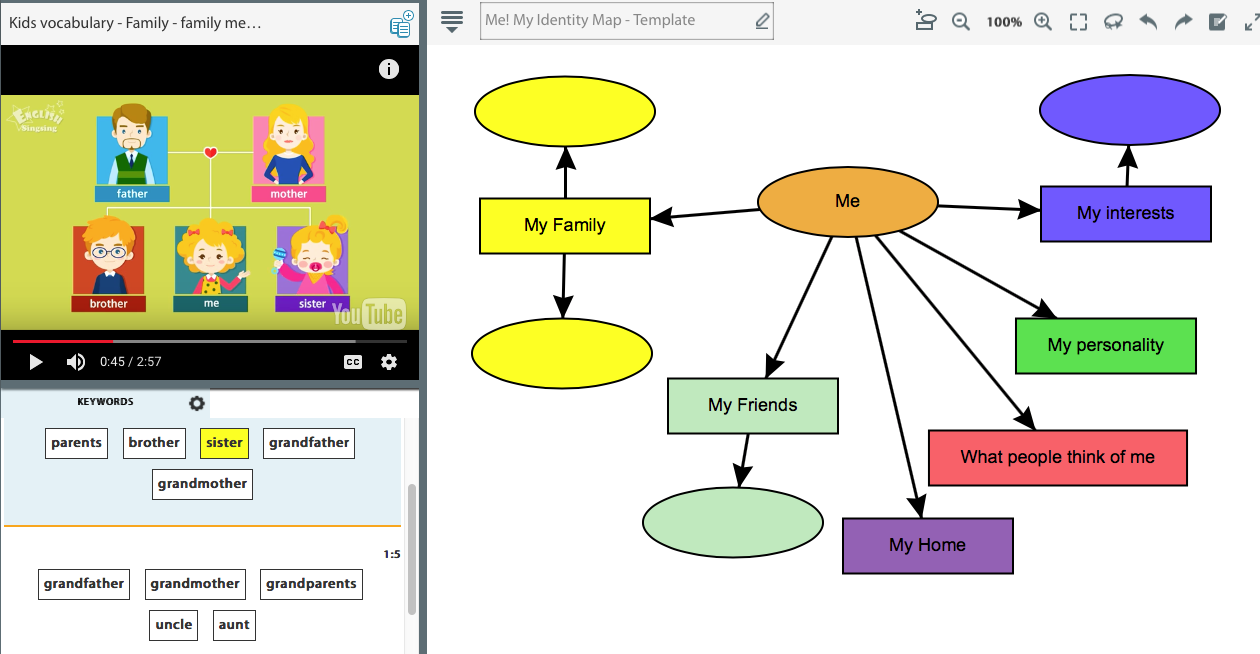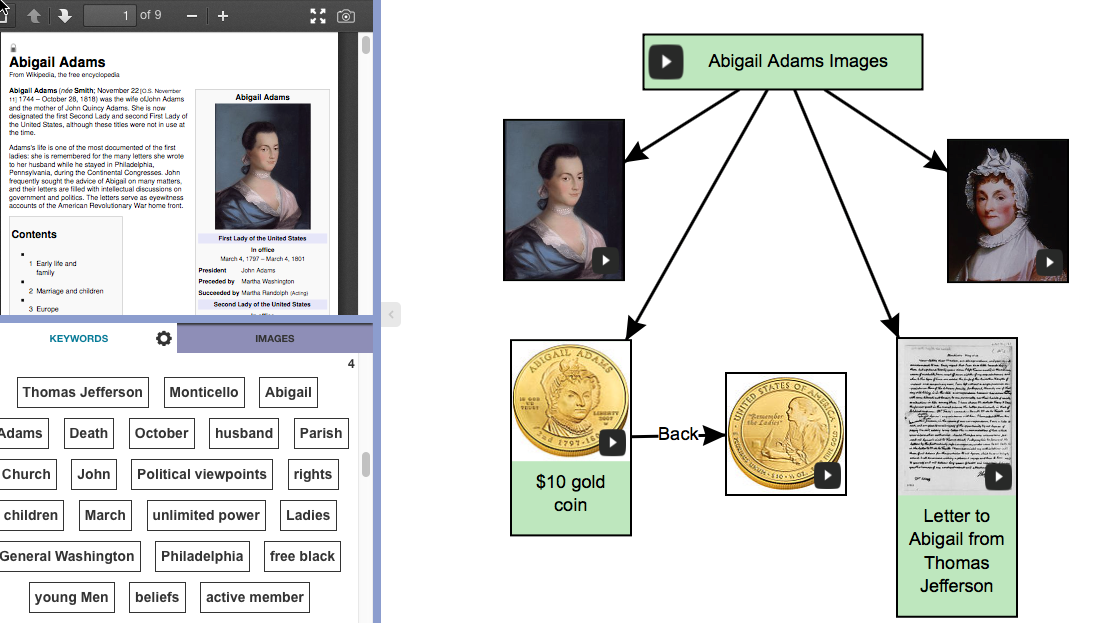Never ones to rest idle, our staff have been busy creating resources to help teachers easily incorporate Ideaphora into their lessons. Educators can find video tutorials about using Ideaphora’s features, lesson plans and examples of student maps – and more coming soon! – on our new Teacher Resources page.
New Teacher Resources Available: Lesson Plans, Video Tutorials and More
Creating Connections = Meaningful Learning
You know the saying “I’ve got too many irons in the fire”? Well, I have my own personal twist on that saying - ”There are fires everywhere, and I’ve got irons in every one of them!”
Being a professional in the field of educational technology, those fires might look like helping other teachers use technology, working with an administrator, negotiating with a vendor, or even working with a family member who knows you can help sync his/her latest device.
One thing we can all agree on in this busy edtech world is that we like resources for integrating technology that engage students, cover standards, promote higher-level thinking, and are (at least close to) effortless to implement. Ideaphora’s web-based concept mapping platform is one of those resources.
Demystifying Standards
I’ve spoken before of my mentor in graduate school, Donald Graves. He used to say that one of the most important questions we could ask, as educators, citizens or even humans, was: What’s it for? Whether an educational policy or a political stance, he’d tell us, “What it’s for has everything to do with what we’re for.”
A Farewell Tour of 2016
This year marked several milestones for Ideaphora - we launched our product out of beta with versions for individual and classroom use. We also have more than 175 classroom pilots in progress. Over the course of 2016, we've shared numerous updates, concept mapping strategies and tips for using Ideaphora with learners of all ages, but our blog readers responded most to the articles listed below. While these posts spanned various subject areas and instructional strategies, they all had one thing in common. They illustrate that concept mapping is an increasingly critical in the age of digital learning as educators prepare students for the college and future careers.
The Next Chapter: Deeper Engagement in Digital Reading
Due to their cost-effectiveness and convenience, digital texts are becoming as popular inside classrooms as they are outside school walls. Students will increasingly encounter digital text in their academic, personal and professional lives, so it's imperative they learn how to read proficiently in both print and digital formats.
A growing body of research indicates students read differently online than they do in print. Students tend to consume ebooks and other digital materials, such as online articles and videos, passively, skimming the material rather than deeply engaging with it. Studies have shown students' comprehension suffers when reading online. Research by the Schugars, the Joan Ganz Cooney Center, and others, as detailed by Education Week, indicate that the same attributes of ebooks that increase students' motivation to read also create distractions for students, affecting the way they read.
Reading is a Verb
This post is written by Mary Chase, Ph.D., an expert in curriculum design, literacy education, and technology integration.
In 1871, the poet and thinker Walt Whitman wrote:
… the process of reading is not a half sleep, but, in highest sense, an exercise, a gymnast's struggle; that the reader is to do something for himself, must be on the alert, must himself or herself construct indeed the poem, argument, history, metaphysical essay—the text furnishing the hints, the clue, the start or frame-work. Not the book needs so much to be the complete thing, but the reader of the book does. That [would result in] a nation of supple and athletic minds, well-train'd, intuitive, used to depend on themselves, and not on a few coteries of writers.
When we picture a reader, we imagine a person leaning over a text, still and silent. However, if we could peek into the reader’s “thought bubble,” we’d see instead someone wrestling with ideas, leaping between past experience and new applications, and dismantling words and phrases. Reading isn’t a passive endeavor.
Transactional Theory in Practice: Visible Thinking and Reading
This post is written by Mary Chase, Ph.D., an expert in curriculum design, literacy education, and technology integration.
It’s been a long time since I was a student, yet every year as autumn approaches I become nostalgic for the days when my only job was learning. I’ve been very fortunate in my teachers, but the highlight of my student days was surely the three years I spent at the University of New Hampshire studying under the guidance of Donald Graves and Jane Hansen. I ended up with a lot more than a Ph.D.
In the late 1980’s, literacy studies were undergoing a renaissance, and UNH, home of the Reading and Writing Process Lab, was at its center. Graves and Hansen were pioneers in new pedagogies that emphasized students’ abilities rather than their deficits. They also knew every other literacy guru—Jerry Harste, Ken and Yetta Goodman, Frank Smith—and made sure that we knew them too. One of the most influential for me was Louise Rosenblatt, author of The Reader, The Text, The Poem: The Transactional Theory of the Literary Work.
Start the School Year with Lessons on Identity
It’s our favorite time of year: back-to-school season! For many teachers and students across the country, school is back in session, and many more will be headed to campus in the coming weeks.
As schools have kicked off the 2016-17 school year, we also have launched (out of beta) the new Ideaphora online concept mapping environment for individuals. Our tool helps learners assimilate information from digital content and strengthen higher order thinking skills at a time when schools and districts are transitioning to new learning environments that better prepare students for jobs that don’t exist yet.
At the beginning of the school year, teachers often focus learning activities on self-identity to help build positive self-esteem, a welcoming classroom culture and acceptance among their students. One of the ways educators can introduce this topic while addressing key skills and standards is through concept mapping.
Helping Students Curate and Synthesize Digital Content
This post is written by Mary Chase, Ph.D., an expert in curriculum design, literacy education, and technology integration.
I read today that there are more than a billion websites on the Internet. The mind boggles. When I look back on my own education, I remember thinking that my library’s card catalog and the Reader’s Guide to Periodical Literature comprised the pinnacle of responsible research. Later, I graduated to the more sophisticated Social Sciences Citation Index and other complex databases; nevertheless, my resources were paper and my access limited to library hours and collections.

